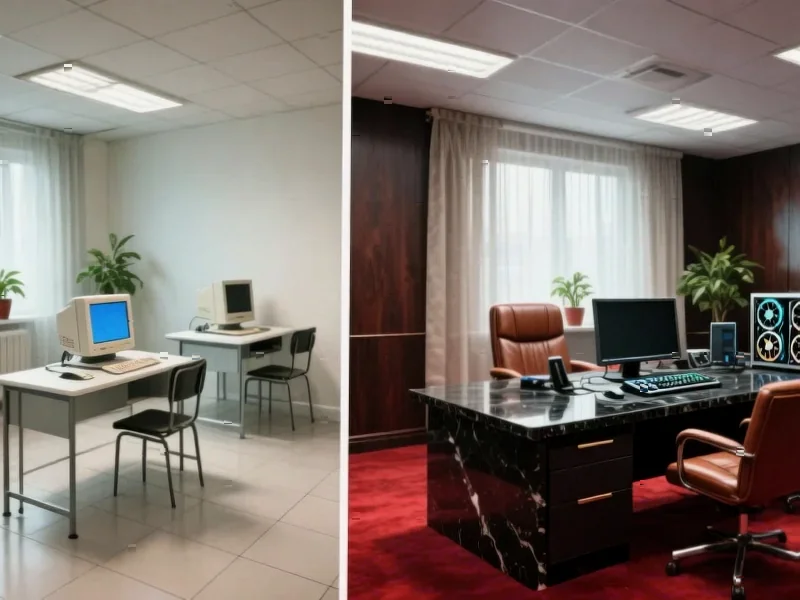According to Financial Times News, Chinese President Xi Jinping has arrived in South Korea for high-stakes trade talks with Donald Trump that will determine whether the two superpowers extend a trade war truce or return to full-blown economic hostilities. The leaders are meeting in Busan on Thursday for a two-hour summit following dramatic escalations this month, including China’s new export control regime for rare earths and critical minerals. The talks come six months after Trump imposed 145% tariffs on Chinese goods and Xi retaliated with 125% tariffs, creating what US Treasury Secretary Scott Bessent described as a de facto trade embargo. Potential deal elements include Beijing approving American investors taking control of TikTok in the US, China postponing rare earth export controls for one year, and possible US approval of advanced Nvidia chip exports to China. This summit represents a critical moment for global economic stability.
Table of Contents
The Rare Earth Chess Move
China’s rare earth export control threat represents one of the most sophisticated economic weapons in modern trade warfare. Rare earth minerals like neodymium, dysprosium, and praseodymium are essential for everything from electric vehicle motors to precision-guided weapons and wind turbines. What makes this particularly potent is that China currently controls approximately 85-90% of global rare earth processing capacity, despite having only about one-third of global reserves. The one-year postponement offer gives China leverage while allowing Western companies breathing room to diversify supply chains. However, building alternative processing facilities outside China typically takes 3-5 years and requires overcoming significant environmental and technical hurdles, meaning even a temporary reprieve doesn’t solve the underlying supply chain vulnerability.
Semiconductor Sovereignty at Risk
The potential Nvidia chip export approval represents a fundamental tension between short-term deal-making and long-term technological sovereignty. Nvidia’s Blackwell B30A chips represent the cutting edge of AI computational power, and their export to China could significantly accelerate Chinese AI development across military and commercial applications. The dilemma for the US is whether temporary trade stability is worth potentially sacrificing what Bonnie Glaser correctly identifies as America’s “compute advantage.” This isn’t just about current-generation chips—it’s about the feedback loop where advanced chips enable better AI, which in turn designs better chips. If the US concedes on semiconductor exports, it could undermine the very technological moat that has maintained American competitive advantage in artificial intelligence and high-performance computing.
TikTok’s Geopolitical Dimensions
The TikTok ownership question extends far beyond corporate control into the realm of information warfare and data sovereignty. American investors taking control might resolve immediate data security concerns, but it doesn’t address the fundamental algorithmic influence that ByteDance’s technology represents. The platform’s recommendation engine—trained on billions of hours of user engagement—represents one of the most sophisticated behavioral influence systems ever created. Even with American ownership, the underlying algorithmic architecture and engineering talent largely remain Chinese-developed. This creates a scenario where the US might win the ownership battle while potentially losing the broader technological influence war, particularly as TikTok increasingly becomes a primary news and information source for younger demographics globally.
Broader Supply Chain Implications
Beyond the headline issues, this summit’s outcome will ripple across global manufacturing and technology sectors. The current 145% and 125% tariff levels have effectively created what Treasury Secretary Bessent accurately described as a “de facto trade embargo,” forcing multinational corporations to completely rethink their supply chain architectures. Companies that spent decades optimizing for cost efficiency through Chinese manufacturing are now facing the reality that geopolitical risk requires redundancy and regionalization. The November 10 deadline creates urgency, but the structural shifts—whether toward friend-shoring, near-shoring, or diversified manufacturing—will persist regardless of the summit’s outcome. The genie of supply chain vulnerability is out of the bottle, and no temporary trade truce can put it back.
Realistic Summit Expectations
While both sides have incentive to reach an agreement, the fundamental tensions between American technological protectionism and Chinese industrial policy ambitions suggest any deal will be inherently unstable. The best-case scenario of “a modicum of stability” that Glaser references would likely involve temporary concessions on all sides—TikTok ownership transfer, delayed rare earth controls, limited chip export approvals—but these represent tactical pauses rather than strategic resolutions. The underlying competition for technological supremacy and economic influence continues unabated. What makes this particular summit noteworthy is that it occurs against the backdrop of Trump’s social media platform and communication style introducing additional unpredictability into already complex negotiations. The most likely outcome is a temporary extension that kicks fundamental disagreements down the road while both sides continue positioning for long-term advantage.



